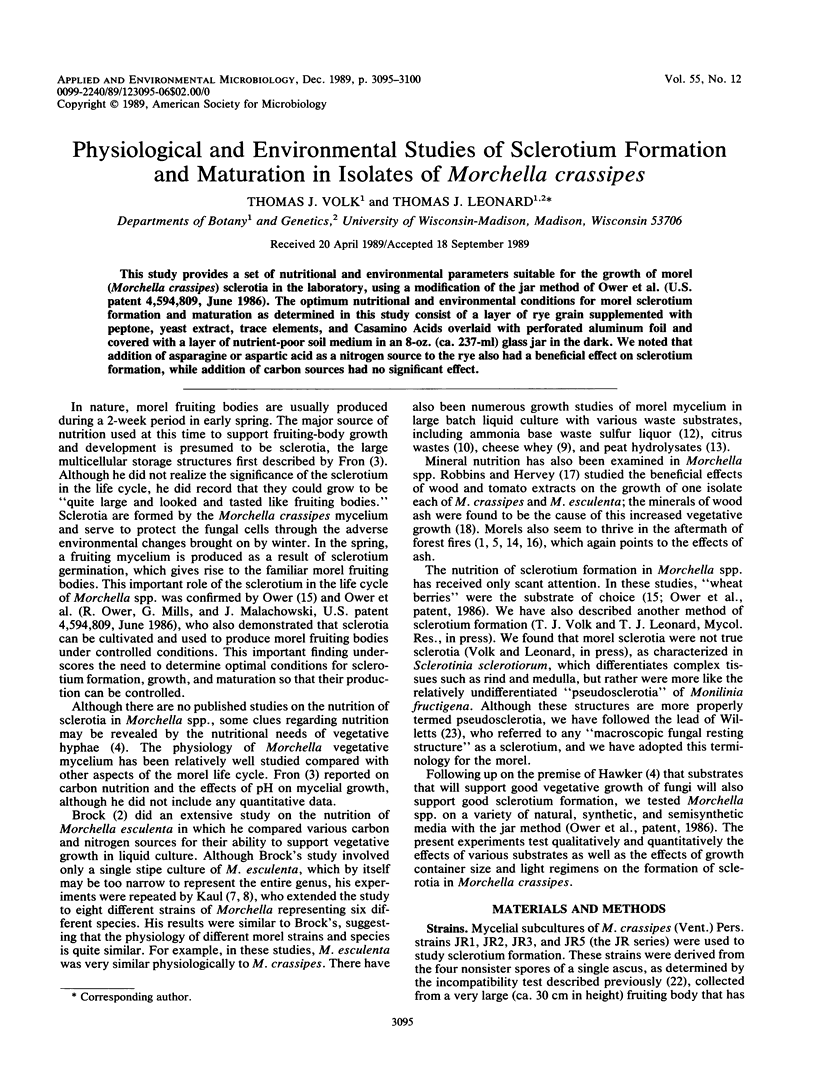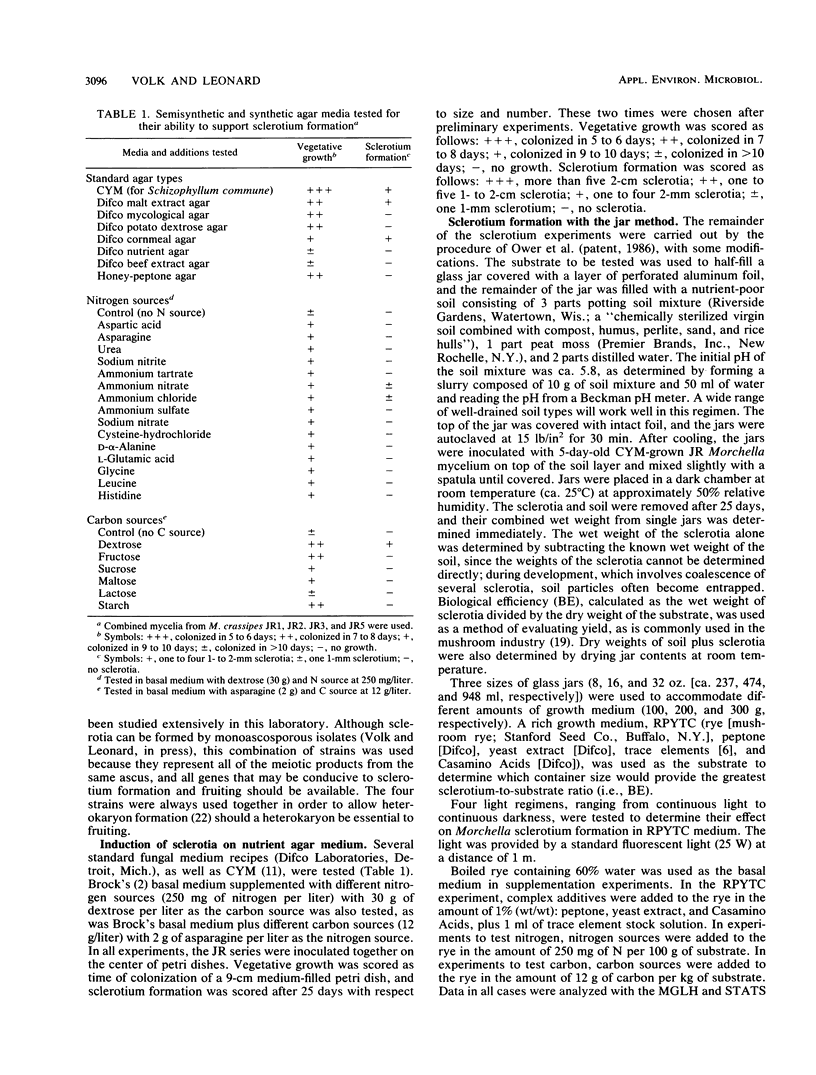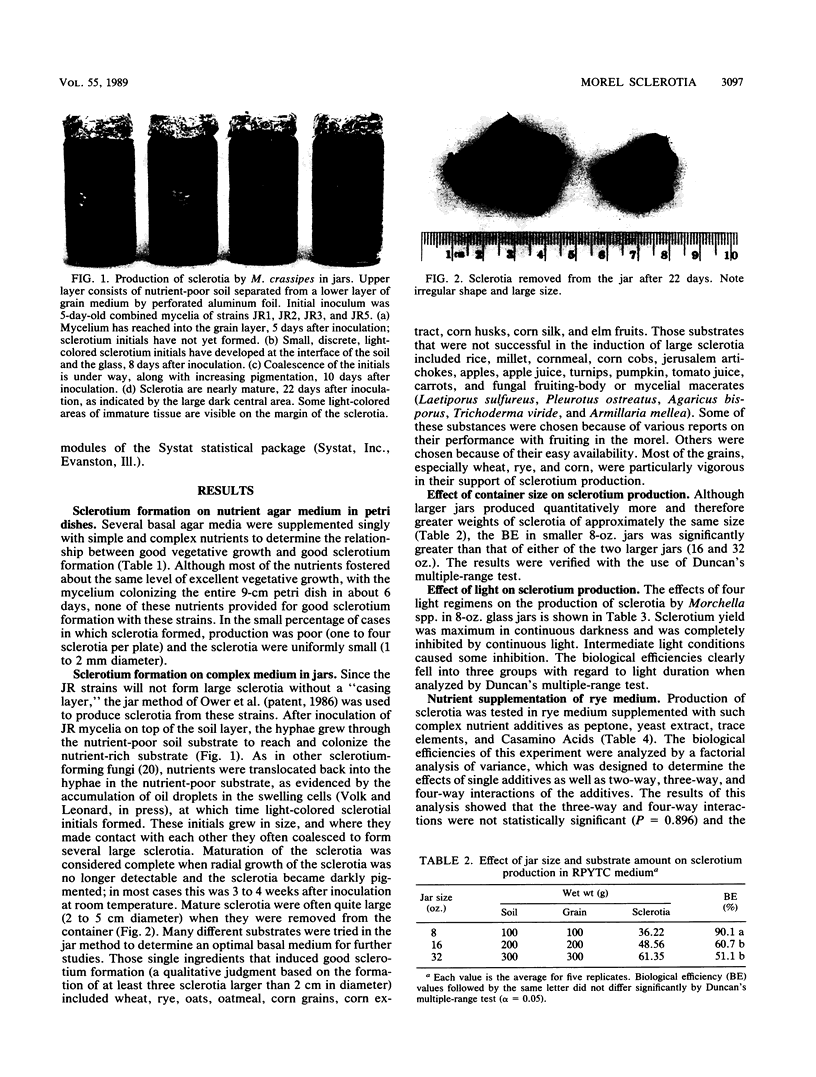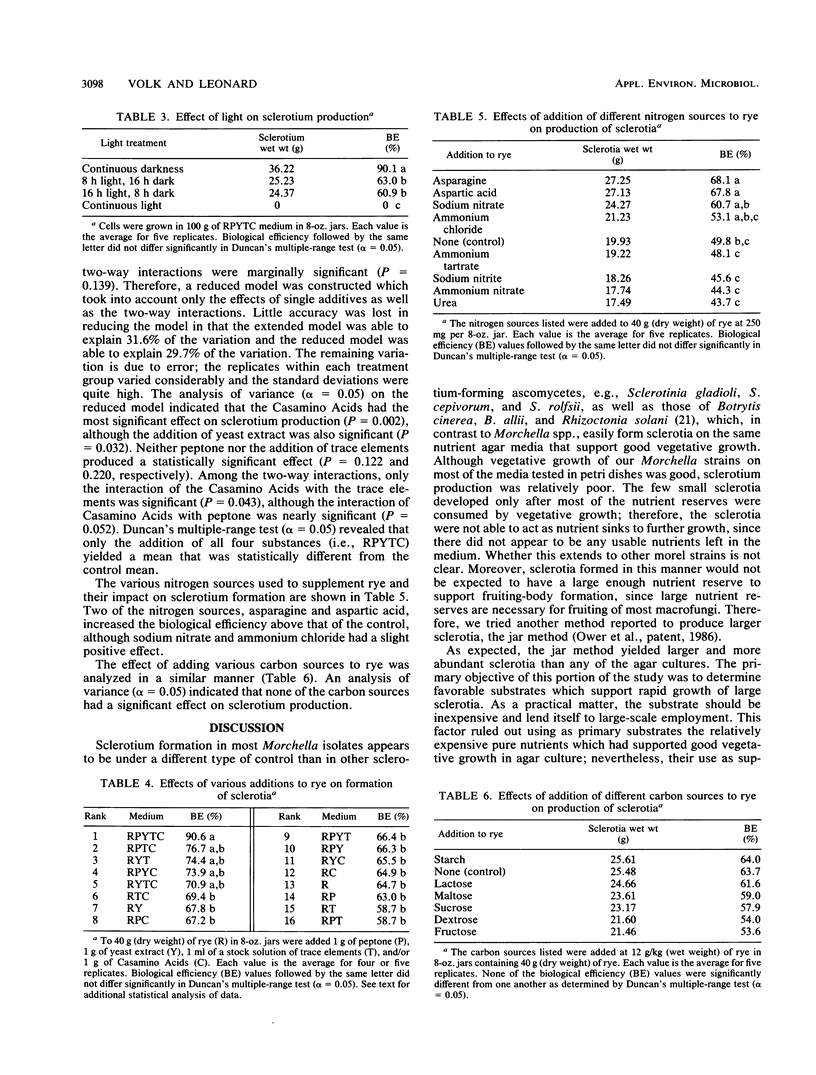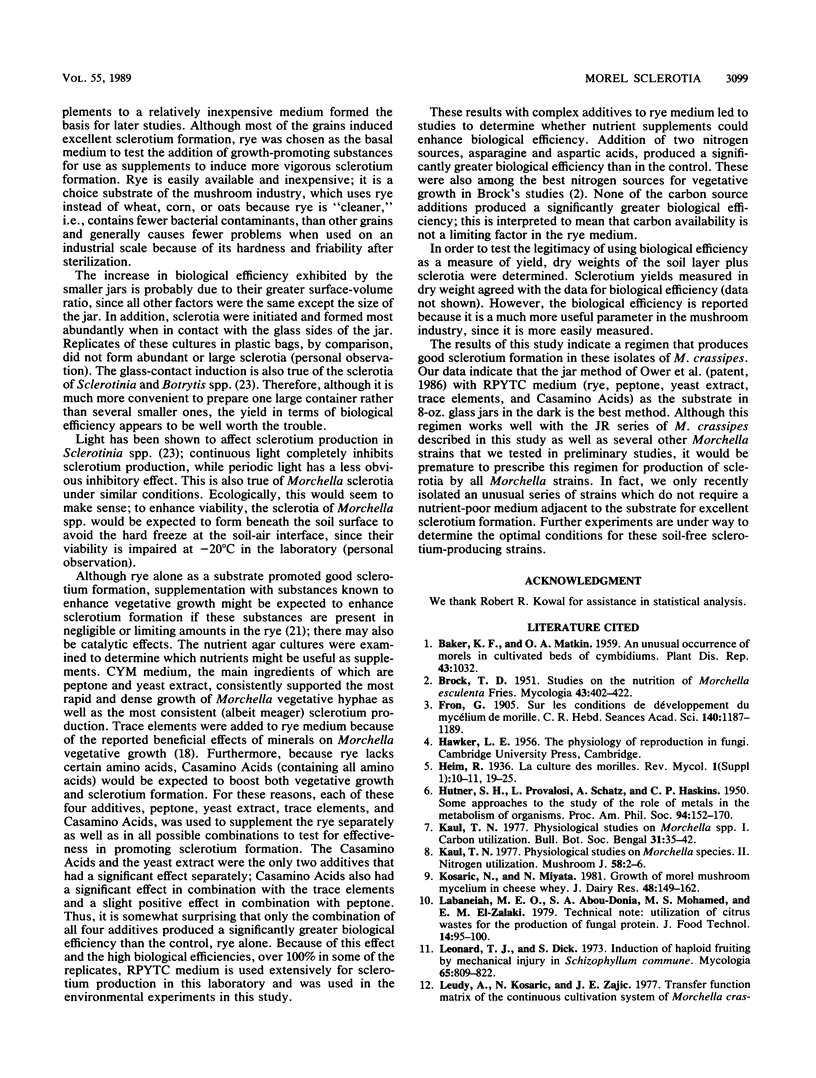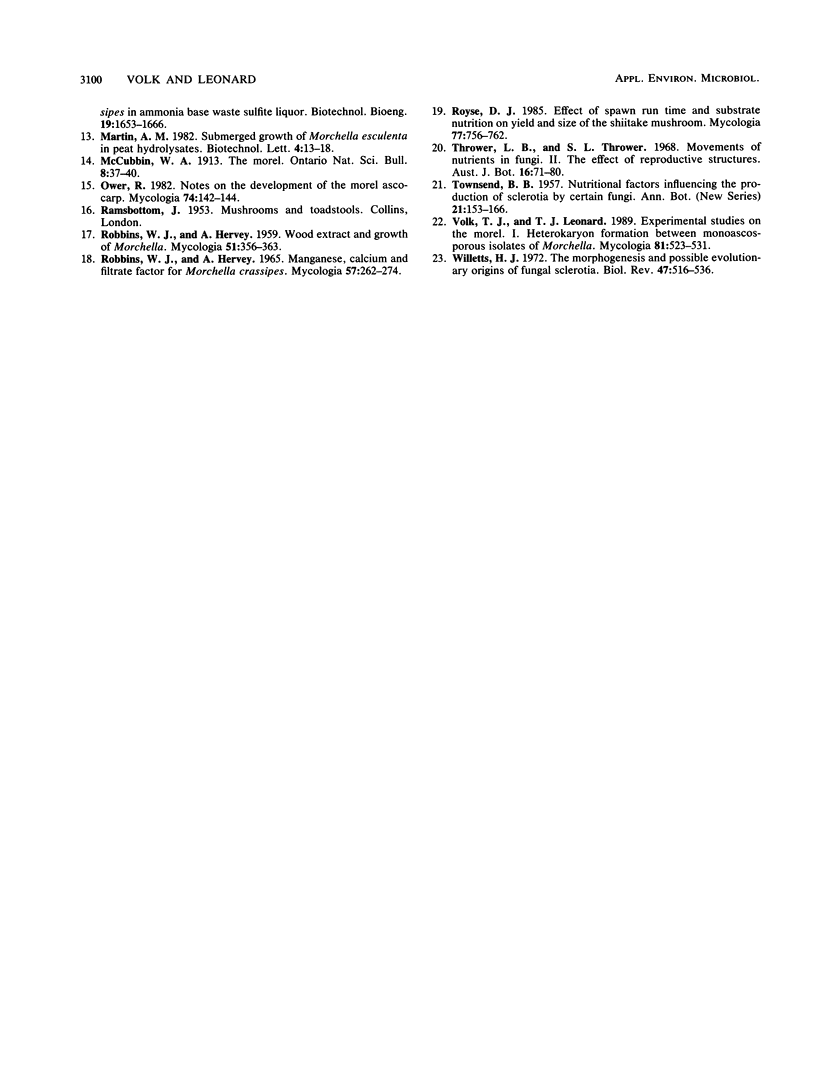Abstract
This study provides a set of nutritional and environmental parameters suitable for the growth of morel (Morchella crassipes) sclerotia in the laboratory, using a modification of the jar method of Ower et al. (U.S. patent 4,594,809, June 1986). The optimum nutritional and environmental conditions for morel sclerotium formation and maturation as determined in this study consist of a layer of rye grain supplemented with peptone, yeast extract, trace elements, and Casamino Acids overlaid with perforated aluminum foil and covered with a layer of nutrient-poor soil medium in an 8-oz. (ca. 237-ml) glass jar in the dark. We noted that addition of asparagine or aspartic acid as a nitrogen source to the rye also had a beneficial effect on sclerotium formation, while addition of carbon sources had no significant effect.
Full text
PDF